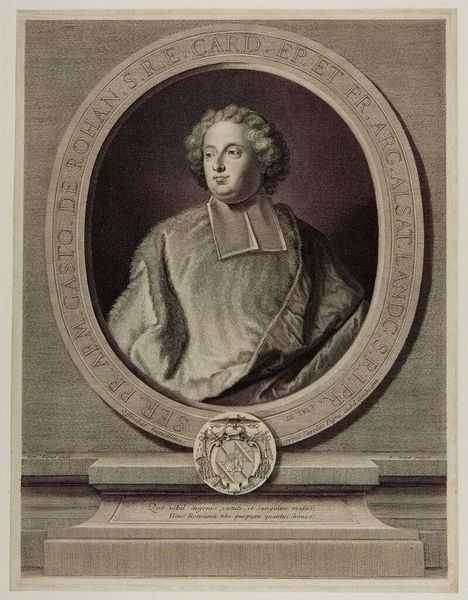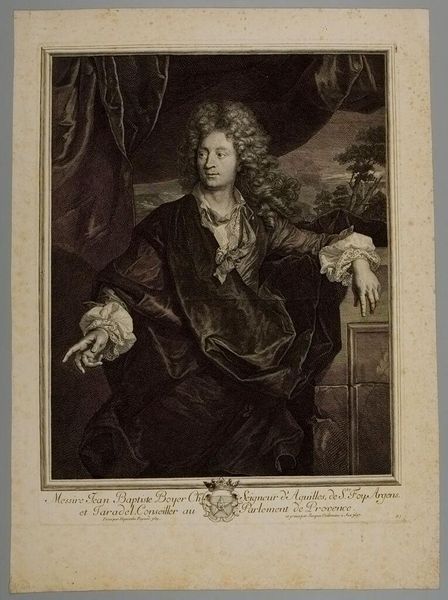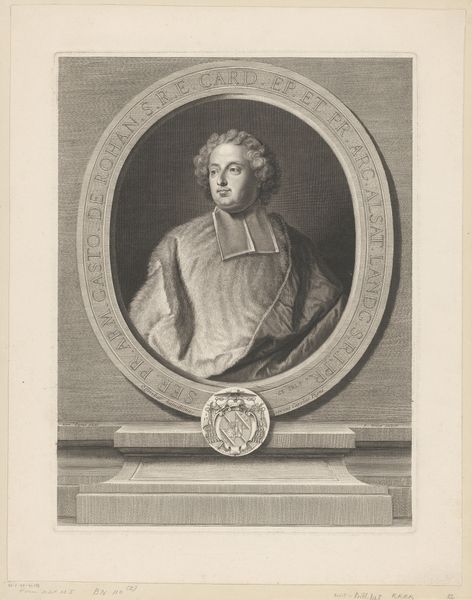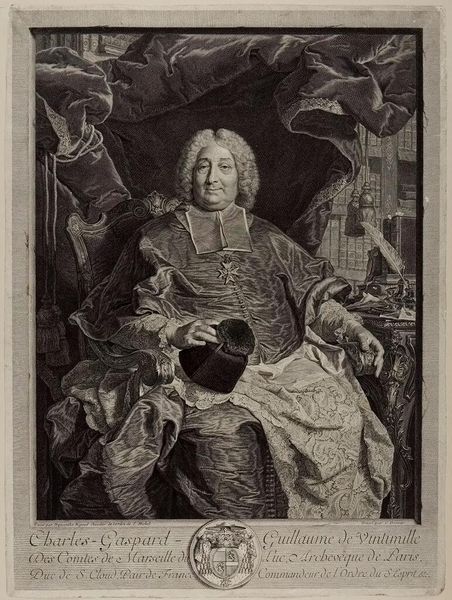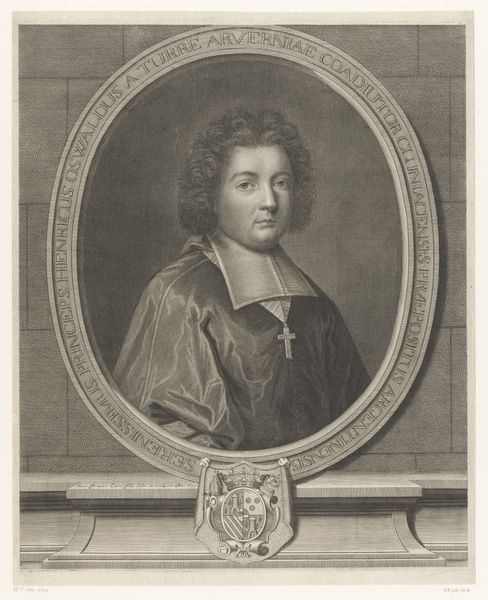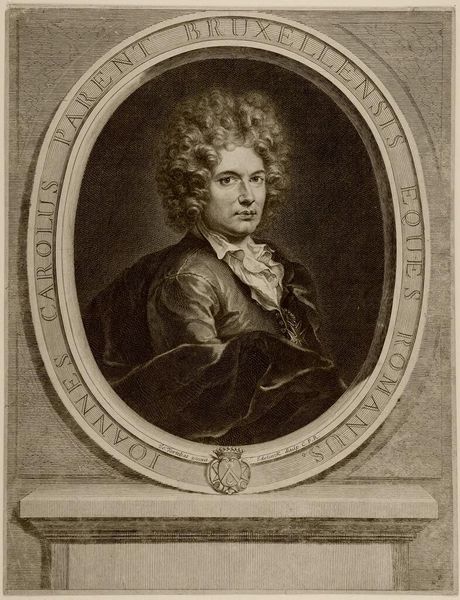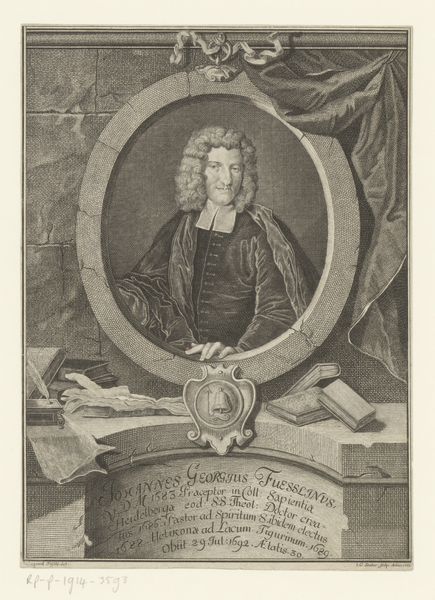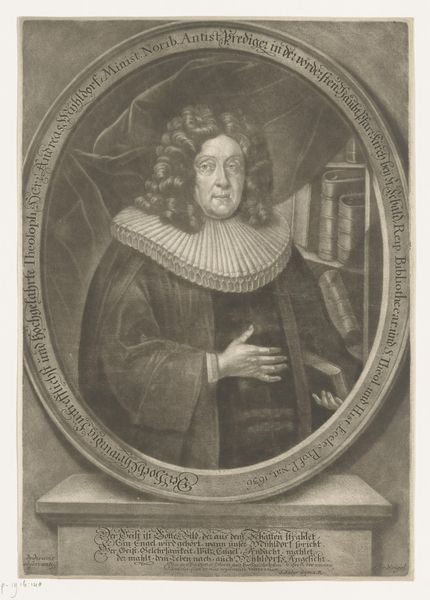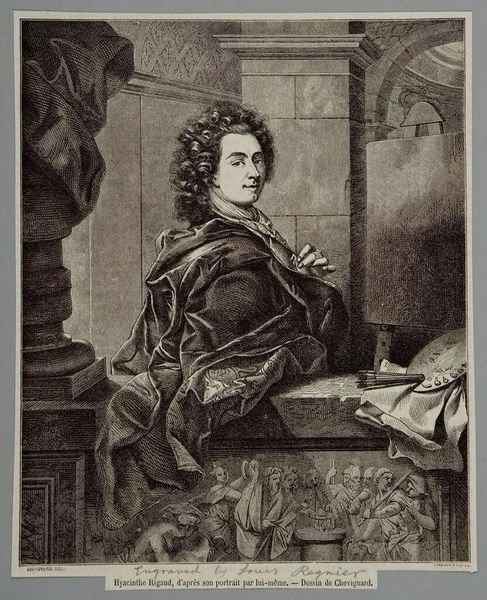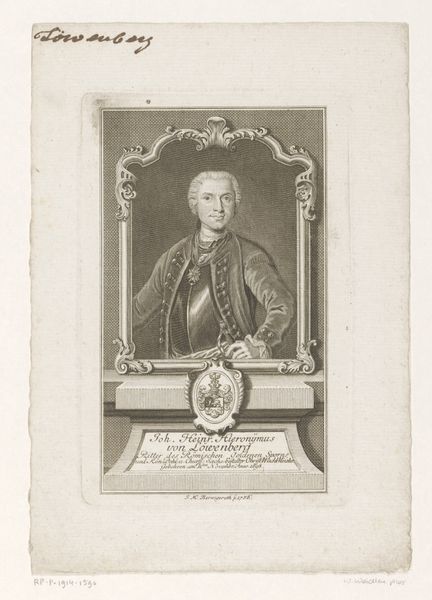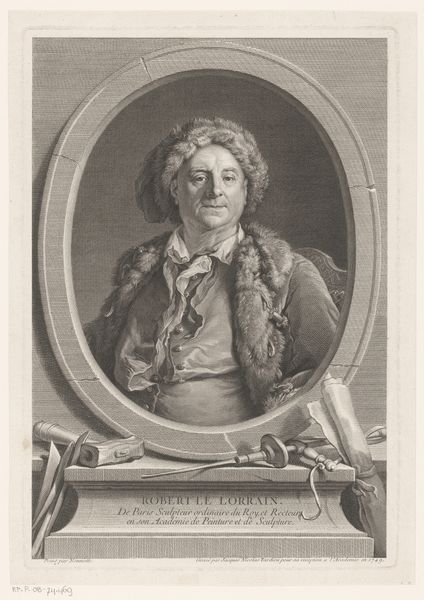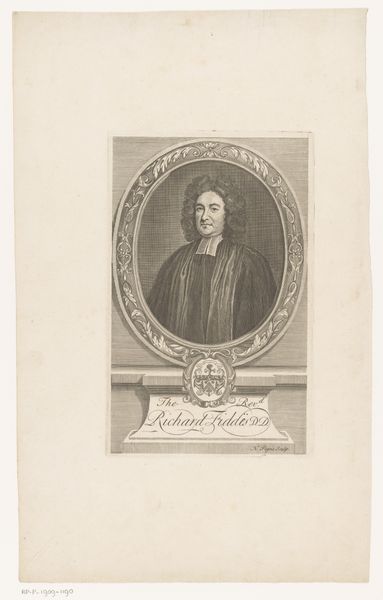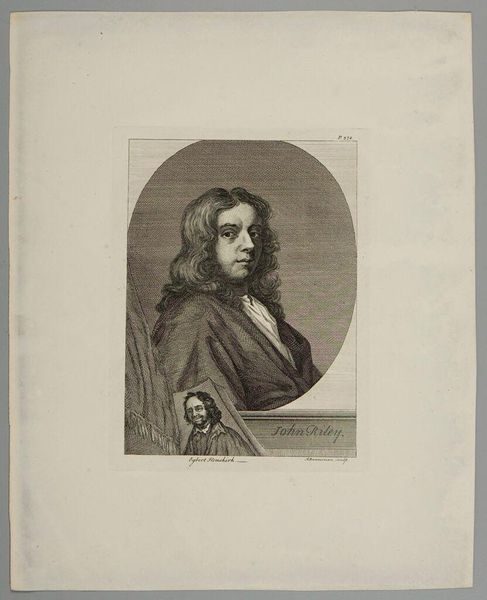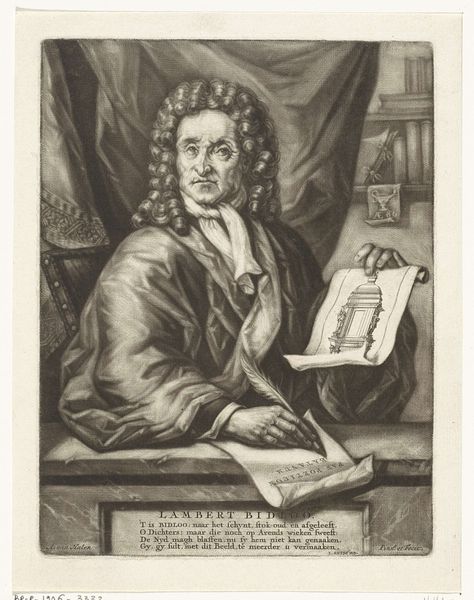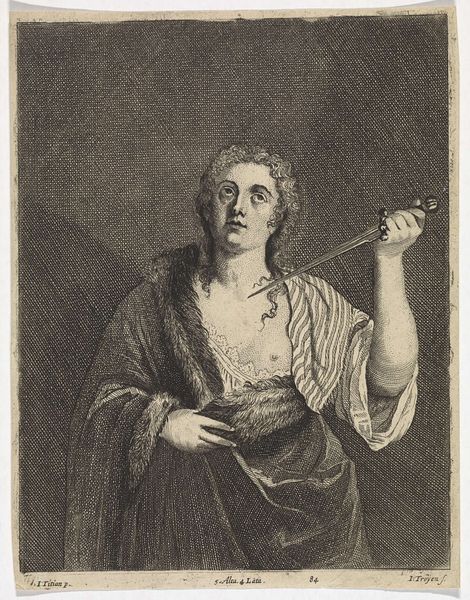
Anthony Van Dyck, Self Portrait 1785 - 1799
0:00
0:00
Dimensions: 50 × 42 in. (127 × 106.7 cm)
Copyright: Public Domain
Editor: This woven tapestry, "Anthony Van Dyck, Self Portrait", dates from between 1785 and 1799. It's striking how the Imperial Russian Tapestry Manufactory reinterprets Van Dyck’s painting in textile. What is your take on this translation of mediums? Curator: This work allows us to explore ideas around artistic authorship and reproduction through the lens of textile production. In 18th-century Russia, emulating Western artistic styles was often a display of political and cultural power. How does the choice of weaving, typically associated with craft, complicate or reinforce the 'high art' status of portraiture here? Editor: That’s interesting. I hadn't thought about the politics of craft versus art. Curator: Think about it this way: weaving has historically been gendered, and often associated with women's labor. What does it mean to reproduce a male artist’s self-portrait in this medium? Does it subvert or reify the male gaze? The texture adds another dimension, don’t you agree? Editor: It certainly adds a tactile quality that's missing from the original painting. It's almost like a softened, more approachable version of Van Dyck. The nuances are amazing. Curator: Exactly! And in light of feminist art histories, consider how the tapestry medium challenges traditional hierarchies and offers different readings. Looking at this tapestry challenges what we traditionally value in art. Editor: It definitely provides an alternative, challenging point of view. Thanks for making me think beyond just the visual.
Comments
No comments
Be the first to comment and join the conversation on the ultimate creative platform.
